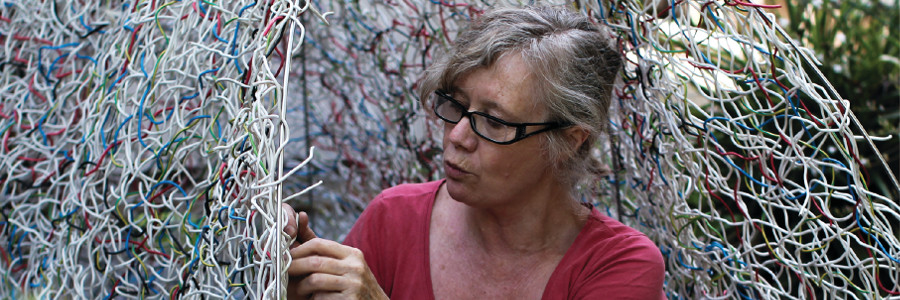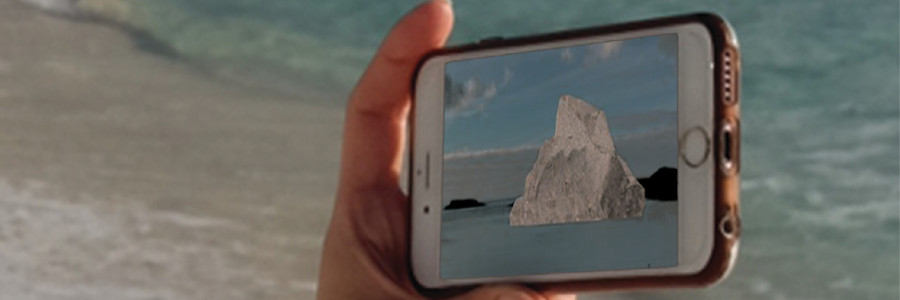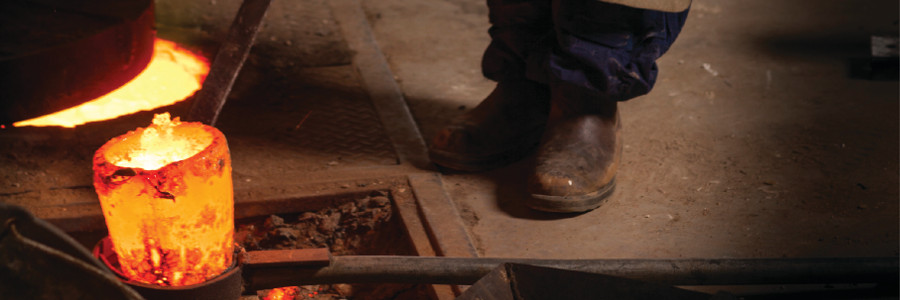“When you go out there, you don’t get away from it all, you get back to it all. You come home to what’s important. You come home to yourself” – Peter Dombrovskis.
This Saturday, March 17th, the Lorne foreshore will once again play host to one of the greatest sculpture events in the world: the Lorne Sculpture Biennale.
Nestled between the awe-inspiring Otway Ranges and the glorious blue waters of the Bass Strait, the ever-popular tourist destination is the perfect setting to explore this year’s theme, Landfall, and the delicate relationship between nature, humanity, and art.
“The theme really came about because I felt that Lorne was a microcosm for what was happening on a much larger scale all over the world. Mainly, I felt that the environment and its sustainability is one of the biggest issues we face as a species and because I just don’t see the uptake of technology and methodologies and philosophies that is needed to reverse our impact on the landscape”, explains Curator Lara Nicholls, who grew up in the town.
“I knew that many artists have strong views on such things, and that often they are the bellwethers that herald change, so I wanted to lay down the challenge to them to see what they would come up with.”
40 projects will be on display throughout the duration of the biennale, confronting topics including biodiversity, climate, and technology. Many include interactive elements that, Nicholls says, will allow audience members to participate in the creation of the art in intriguing and innovative ways.
One such example is Shelter, a piece by Melbourne artist Fleur Brett. The work features a woven figure of the artist, positioned taking refuge in a makeshift shelter constructed from recycled data cable.
There’s an irony to the piece, Brett notes. The titular shelter leaves the figure exposed to the elements, as well as to the eyes of passerbys.
As audience members view the work, they too may find themselves viewed through a thermally activated wildlife camera which will stream live footage to Brett’s website.
Reflecting on our fascination with observing nature, the right to shelter, and the nature of security in a technologically-dominated world, Shelter marks the culmination of ten years of experimentation by Brett.
“I’m excited because it’s a new element for me, and I’m not sure where it will go. I change my work based on feedback from people, and the conversations around the work, and I’ll be capturing that in the work as people chat and interact.“
The theme isn’t the only challenged posed to artists at the biennale. The environment of Lorne itself requires unique consideration.
“It is a great challenge for sculptors to take on an open public space such as Lorne that is subjected to the vicissitudes of Otway weather patterns. The landscape tends to subsume any structure placed upon it, thus it takes a certain skill to make work that holds its own in that space”, says Nicholls.
Two artists who won’t be too concerned with the frivolities of nature are Seol Park and John Kelly, whose Augmented Reality project En Plein Air; In Plain Sight is sure to redefine the way many perceive sculpting.
The first of its kind to be presented at the biennale, the piece takes the depiction of an iceberg in Kelly’s painting, First Berg, and brings it to life off the coast.
“Seol raised the AR project with me after seeing my 2013 Antarctic paintings and I was very interested to see how it would work“, reveals Kelly.
“I liked the idea that the audience had to find the work through technology and that at its point of placement the impact on the environment was nil.”
Though they joke that the piece is Pokemon Go! for the art-loving public, Park clarifies that the value of En plein air; In plain sight is in more than just the application of modern technology.
“In my mind, a new art-making tool, such as AR, is worth exploring not because it’s simply new but when it allows us to create meaningful visual expressions that are otherwise unachievable.”
Indeed, with some of the icebergs Kelly saw during his time in Antarctica being “as large if not bigger than the Colosseum”, the project is sure to demonstrate just what will be possible in the future of sculpture.
As the sun sets on the foreshore each Saturday night, visitors are invited to join sculptor Anton Hasell in Erskine Paddock for his sculpture/performance experience, The Spirit Tree Furnace.
“In each of the three performances, one each weekend of the festival, the ancient arts of metal founding will be combined with new casting possibilities using digital technology, demonstrating the continuum of knowledge whose advances are built from traditions whose origins are lost in the mists of time”, muses Hasell.
By the warm light of his furnace, Hasell will create sculptures using molds he will craft live throughout the day. Each sculpture will be made from aluminium lumps (not cans) that people donate, up-cycling scrap into art.
Hasell will continue working through the night, and looks forward to talking with visitors who come to engage with his enchanting work.
“Australians need to tune into the resonant frequencies of Australian landscapes, and be moved by the natural cadences of their country’s ambient beats, if we are to live in tune with our landscapes. If we listen to our country and embrace its strangeness and unfamiliarity and the particular needs it has to sustain those unique experiences it offers us, we might resist or reconsider the old exploitative economic models that eat out the heart out of country.”
Nicholl says the event will leave visitors inspired, delighted, and hopes it opens up dialogue for change. If the work of the four artists above is anything to go by, it will certainly do just that.
The Lorne Sculpture Biennale runs 17 March – 2 April.
For more information, visit the official website.



